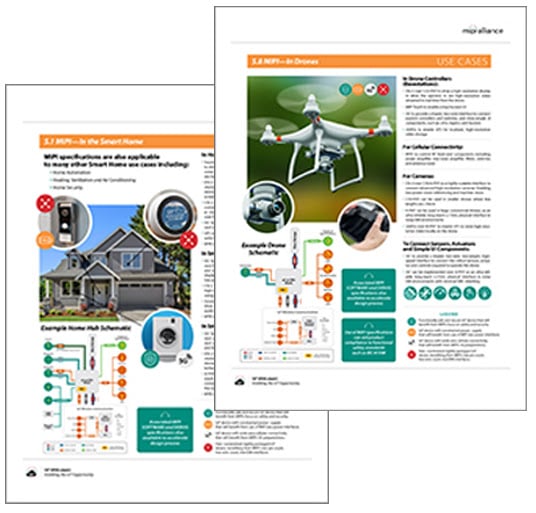2 min read
The Internet of Things is Here — With MIPI Specifications at its Core
![]() Ian Smith, MIPI Alliance Technical Content Consultant
:
28 September 2020
Ian Smith, MIPI Alliance Technical Content Consultant
:
28 September 2020

- News & Events
- News
- Blog
Read the new white paper, “MIPI Alliance: Enabling the IoT Opportunity" »
Over the past decade, MIPI specifications have become firmly rooted into the core of smartphones, connecting the sensors, cameras, displays, radios and other components that are fundamental to these devices. It is fascinating to watch as these core mobile technologies are adopted by other market sectors — enabling a range of new use cases, unlocking commercial value, and fueling the massive growth of the “Internet of Things.”
With many mobile technologies having been enhanced and optimized to support massive, wide-area, low-cost, machine connectivity — and with device-side connectivity “built in” to the very core of many microprocessors — it appears that everything that can be connected, will be connected in the coming years. From connected doorbells in our homes to connected sneakers on our feet, from remote healthcare monitoring that brings the hospital into our homes to smart greenhouses that increase crop yields, the breadth and scale of the IoT is both extraordinary and virtually limitless. And this is where MIPI specifications come in — as key enablers of this massive transformation of the world around us.
To highlight the relevance of MIPI specifications and illustrate how they can be applied to the vast array of IoT device types, MIPI Alliance recently released a new white paper: “MIPI Alliance: Enabling the IoT Opportunity.” The paper provides a comprehensive overview of the IoT market and examines how core MIPI specifications, such as MIPI I3C® for connecting sensors and peripherals, MIPI CSI-2℠ for connecting cameras and MIPI DSI-2℠ for connecting displays, can be applied to IoT use cases covering smart homes, wearables, smart factories, smart cities, healthcare, utilities and agriculture, to name just a few.
The paper discusses how MIPI specifications, having been developed to satisfy the requirements of mobile devices, deliver key benefits — low power consumption, low pin counts, and low EMI in particular — that can be leveraged by IoT developers. Moreover, the wider ecosystem that has built up around the use of MIPI specifications (component vendors, test equipment providers, software and debug tools, etc.), and the economies of scale that this brings, further make MIPI specifications attractive for developers looking to develop state-of-the-art IoT devices.
The ingenuity of developers is clear in the multitude of novel IoT device designs that are now coming to market solving innumerable use cases in both the enterprise and consumer segments. IoT will certainly be a highly competitive market, and the core technologies that underpin these billions of devices will be key to finding commercial success. We encourage anyone involved in developing IoT solutions to review the white paper for a better understanding of how MIPI specifications can be implemented to enhance their next IoT device designs.
Editor's note: An overview of the “MIPI Alliance: Enabling the IoT Opportunity” white paper was presented at MIPI DevCon 2020. View the presentation and recording »
Acknowledgments: MIPI Alliance would like to extend special thanks to the members of the MIPI IoT Interest Group and MIPI working group leaders for contributing their time, energy and knowledge to this project.
Ian Smith, MIPI technical content manager, is an IoT specialist and served as the lead author for the IoT white paper.






